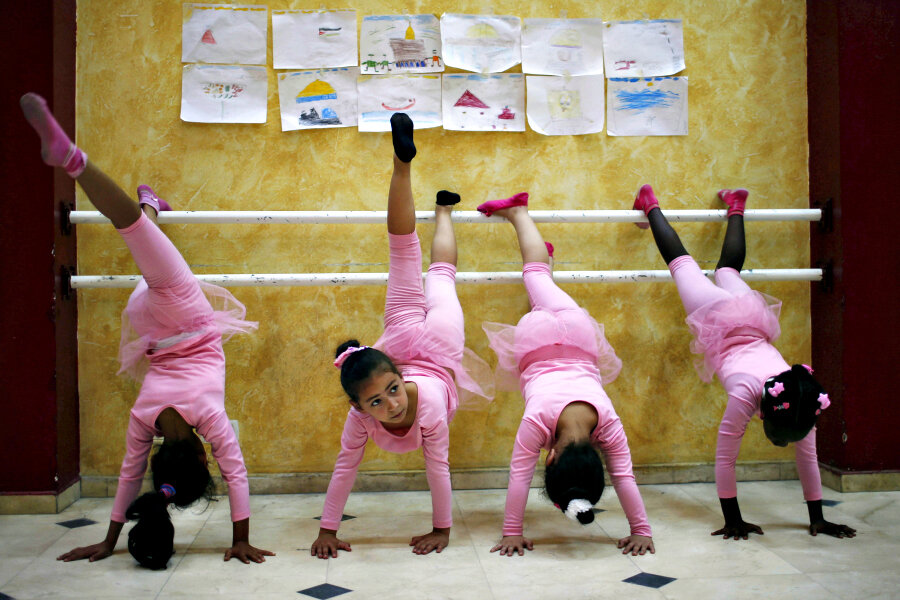A picture of pirouettes and pink at Gaza's only ballet school
Loading...
| GAZA City
The group of girls, ponytailed and dressed in pink, stretched their arms out to the sides and pivoted onto their toes, trying desperately to hold still. Eagle-eyed, the instructor surveyed Gaza's latest crop of would-be ballerinas.
Fifty girls aged five to eight are now enrolled in the ballet school at the Al-Qattan Center for Children in Gaza, making it one of the most popular classes the arts institute runs, under the watchful eye of a Ukrainian teacher.
Amid the chaos and destruction that has shattered Gaza so often over the past five years, with repeated wars between Israel and Hamas, the school is a haven of calm and order, one many parents are eager for their children to enjoy.
"The ballet project was a dream for many families," said Heyam Al-Hayek, the head of Qattan's cultural activities. "They had been asking for ballet courses but we couldn't find trainers. It was difficult to bring an instructor from abroad."
The dream began to take shape when they found Tamara, a Ukrainian married to a Palestinian and living in Gaza, who had studied dance and was qualified to teach. She asked not to give her family name.
They started a pilot program in the summer, not sure how many parents would sign up given that Gaza is a conservative society and ballet is hardly a common pastime. Before they knew it, 50 children, all girls, were registered. There is now a waiting list that runs into the hundreds.
In the tiled hall, 14 pupils lined up in unison along the wall, one hand clutching a long metal barre. As Tamara showed them the steps, they copied precisely, angling their feet, bending their knees, one arm outstretched, chins held high.
Some of the children have lived through four wars in their short lifetimes, with Gaza on edge since the Islamist group Hamas seized full control of the enclave in 2007. Since then, Egypt and Israel have maintained a blockade on the territory, carefully monitoring the flow of goods and people to and fro.
For parents, the chance for a child to participate in something so removed from regular Gaza life is both educational and psychologically uplifting. The mother of six-year-old Maria said ballet had helped her daughter get over years of trauma.
"She had been suffering since the 2012 war, and her condition got worse after last year's war," said Manal Abu Muamar, describing Maria's nightmares and a fear of going to sleep.
"After the first ballet class, she came home as happy as a bird. She did the moves she had learned, and she was going around the house like a butterfly."
Almost half of Gaza's 1.8 million people are aged under 18, and UNICEF, the United Nations Children's Fund, estimates that 400,000 of those need some form of psychological care.
But as well as an escape and a chance to try out what they may only have seen on TV, there are several students who the teacher described as "excellent" and "strong girls," with a desire to go further with their dancing.
"I used to imitate ballet dancing that I saw on television or on YouTube," said eight-year-old Bana Zuarub.
"Now I am learning it for real, and I just love it."





